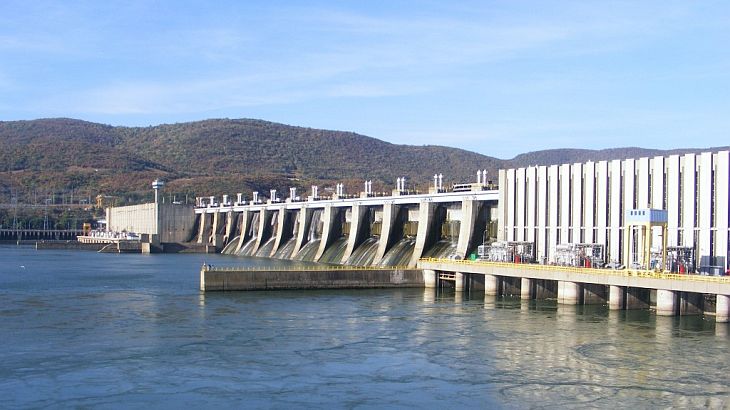Hidroelectrica received the investment in the amount of 82.7 million lei for increasing the life span of the spillway of the Portile de Fier I dam.
“Hidroelectrica received on March 30 this year the investment “Additional protection measures for the dissipator of the Porțile de Fier I spillway dam”, the value of which amounts to 82.7 million lei. The works were necessary to increase the service life of the spillway of the Portile de Fier I dam and to prevent the degradation of the downstream spur of the dissipator,” the company’s press release states.
According to the cited source, the investment consisted in the application of an intervention solution that would prevent the depreciation of the concrete of the downstream spur of the dissipator and the extension of the degradations to the downstream drainage gallery, a situation that would have endangered the stability of the dam and the operation of the hydroelectric plant Portile de Fier I.
“The contract for the development of the investment took place over a period of two years, the actual completion of the works on site requiring 6 months. We are talking about a complex intervention for this objective, an intervention that required experience and high technical skills. It is an important achievement, which demonstrates Hidroelectrica’s commitment to develop and modernize Romania’s energy infrastructure and to ensure a sustainable and safe energy system for future generations,” said Bogdan Badea, president of the Hidroelectrica Directorate.
According to the company, the need for the execution of additional protection works for the dissipator of the Porțile de Fier I dam appeared in 2008 when, following the control carried out in the downstream regularization area of the dam, erosion was found both at the dissipator and in the Danube bed immediately downstream of the dam.
“The works were carried out jointly by the Romanian and Serbian beneficiaries of the SHEN Portile de Fier I arrangement, in accordance with the provisions of the agreements between the two states. The proposed solution sought to prevent the degradation of the heatsink, through the implementation of modern and innovative technologies,” according to the statement.
